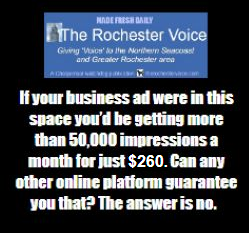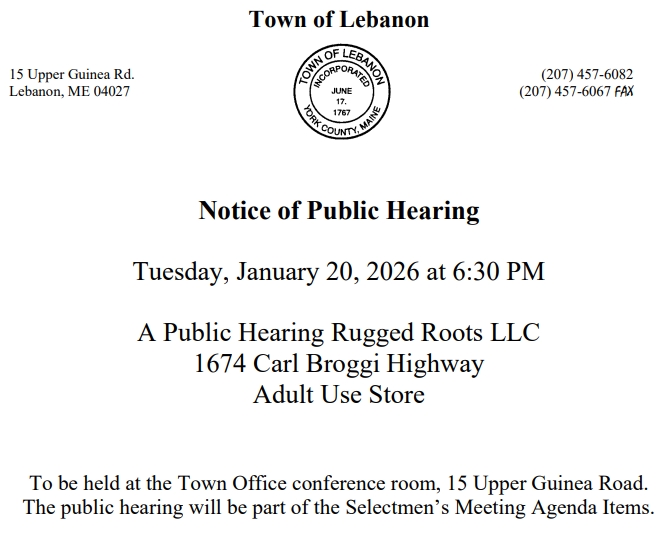We've just landed at Normandy Beach.
Please excuse the glib analogy to the arrival of U.S. forces in Nazi-occupied France. When your job is advocating for the interests of residential utility customers, participating in two electric rate cases at once at the New Hampshire Public Utilities Commission (PUC) can feel a lot like waging a global conflict in two distinct theaters of war.
We've just filed our written testimony in the pending Eversource rate case. On December 6, we did the same for Liberty Utilities. The submission of written testimony is our opportunity to explain why the requested rate increases will unfairly enrich utility shareholders at the expense of utility customers. It is the regulatory equivalent of the Normandy Beach landing.
The two rate cases have certain things in common. Take return on equity (ROE) for example.
Baked into the rates of regulated utilities is an assumed amount for what sort of return shareholders deserve on their investment. ROEs move up or down, in rate case decisions, pending on where interest rates in the overall economy are trending.
You have probably noticed that interest rates are at or near historic lows. But for some reason, both of these utilities think its shareholders deserve an ROE of at least 10 percent a year. That's outrageous, especially because ROE is supposed to be a function of how risky the investment is. When you buy shares in a company that has a monopoly on providing an essential service, it's not exactly like investing in a hedge fund.
Our testimony says that Liberty shareholders deserve a return of 8.23 percent, while Eversource shareholders are entitled to a slightly higher 8.27 percent. These numbers come from Deputy Consumer Advocate Pradip Chattopadhyay, a PhD economist. He's a very thoughtful fellow who really believes in the principles of classic microeconomics. To a lawyer like me it seems that, if anything, he's being generous to these companies and their shareholders.
Another thing these two rate cases have in common is a request not just for a rate increase, but for automatic future rate increases over the next few years. The idea is that because both Eversource and Liberty have well-developed plans to invest in their systems, the PUC should just go ahead and let the companies put those investments into rates without going through the rigamarole of another full rate case.
What a horrible idea.
Rate cases are the opportunity to put all of a utility's costs under the microscope - and, if you're a ratepayer advocate like me, to subject all of the company's expenditures to the skeptical scrutiny they deserve. Allowing utilities to evade this scrutiny via so-called automatic "step" increases is the equivalent of giving them free money.
We are not unsympathetic to the idea that Liberty and Eversource need to look to the future, and to make new investments on which they deserve a return. We share the utilities frustration' that a rate cases is an inherently backward-looking process.
That's why one of our witnesses, Ron Nelson of the California-based consulting firm Strategen, is calling for a transition to performance-based ratemaking. Basically, the utilities get their proposed step increases if they hit agreed-upon performance benchmarks. We're talking about stuff like reliability, deployment of energy efficiency, and the ability to accommodate small-scale renewable generation on the premises of customers.
Eversource's proposed step increases "will not provide benefits greater than the associated costs," said Nelson in his written testimony for the Eversource case. "In fact, the Company's claimed benefits may create more harm than good for ratepayers." Accountability is the answer.
One benefit of a backward-looking rate case is the opportunity to scrutinize utility investments made since the last rate case and throw out any investment that was not incurred prudently. The PUC hardly ever does this, but every once in a while it is necessary and justified.
We urge the PUC to disallow Eversource's $42 million dollar investment in new meters, made in 2013.
What was imprudent? Replacing thousands of old-fashioned analog meters - those devices with a spinning disc and dials that must read manually by a meter reader who goes house to house - with so-called "AMR" meters. AMR stands for "automated meter reading." Going from analog meters to AMR meters is like replacing your Model T with a Yugo.
Yes, AMR meters allow a utility to avoid the expense of meter readers. But they are not truly smart meters, known in utility parlance as AMI - advanced metering infrastructure. AMI meters are capable of providing an ongoing stream of usage data, which in turn enables the utility to adopt innovations like time-varying rates, energy conservation rewards, and demand response rebates. This saves customers money.
According to our AMI witness, Paul Alvarez of The Wired Group in Colorado, Eversource - also known as Public Service Company of New Hampshire (PSNH), should have done one of three things.
First, Eversource could have added radio modules to its analog meters, which "allow meters to be read by vehicles which drive through neighborhoods in exactly the same manner as the AMR meters PSNH installed," but far more cheaply.
Second, Eversource could have done nothing; those old meters were working fine. Alvarez notes that Eversource provided no evidence in its own testimony that all those meters required replacement.
Or, finally, Eversource could have opted for AMI technology. "By July 2013," according to Alvarez, "when PSNH installed traditional meters equipped with AMR, the Edison Foundation estimated that 46 million AMI meters had already been installed in the U.S."
We have a theory about why Eversource made such an imprudent choice, and it is not pretty.
By 2013, when PSNH made the decision to install meters that could not provide interval usage data, it was clear that such data presented several types of economic harm to PSNH," Alvarez testifies. "For example, research indicates that the time-varying rates AMI meters make possible can reduce both system peak demand and energy use.
"PSNH profits increase when the Company invests in the transmission and distribution infrastructure required to satisfy system peak demand, biasing the Company against time-varying rates and peak-time rebate programs," Alvarez continues. "PSNH profits decrease when energy sales volumes fall between rate cases, biasing the Company against the conservation potential offered by AMI meters."
Disallowing that $42 million investment as imprudent would send a message to utility shareholders everywhere that in New Hampshire we expect investor-owned utilities to act in the best interests of their customers if they expect a return on their investment.
Overall, Eversource is seeking a rate increase of almost $70 million a year, even without the future step adjustments. We think Eversource deserves only a $23.3 million increase - which is, by the way, still a lot of money. For Liberty, a much smaller company, we propose trimming a requested $6.6 million increase down to $3.4 million.
To fight off these ratepayer-favorable contentions, Liberty and Eversource will arrive with their armies of lawyers and experts when the scheduled hearings take place at the PUC in March and April, respectively. No, this won't be World War III. It will just feel that way.
Power to the People is a column by D. Maurice Kreis, New Hampshire's Consumer Advocate. Kreis and his staff of four represent the interests of residential utility customers before the NH Public Utilities Commission and elsewhere. It is co-published by Manchester Ink Link and InDepthNH.org and distributed as a public service to news outlets across the state.













